- 型号: TPS82671SIPT
- 制造商: Texas Instruments
- 库位|库存: xxxx|xxxx
- 要求:
| 数量阶梯 | 香港交货 | 国内含税 |
| +xxxx | $xxxx | ¥xxxx |
查看当月历史价格
查看今年历史价格
TPS82671SIPT产品简介:
ICGOO电子元器件商城为您提供TPS82671SIPT由Texas Instruments设计生产,在icgoo商城现货销售,并且可以通过原厂、代理商等渠道进行代购。 TPS82671SIPT价格参考。Texas InstrumentsTPS82671SIPT封装/规格:直流转换器, 非隔离 PoL 模块 DC/DC 转换器 1 输出 1.8V 600mA 2.3V - 4.8V 输入。您可以下载TPS82671SIPT参考资料、Datasheet数据手册功能说明书,资料中有TPS82671SIPT 详细功能的应用电路图电压和使用方法及教程。
TPS82671SIPT 是 Texas Instruments(德州仪器)推出的一款高效、小尺寸的同步降压直流转换器,属于 SIMPLE SWITCHER 系列。该器件采用创新的封装技术(如 QFN 封装),具有高集成度和出色的热性能,适用于多种需要紧凑设计和高效电源管理的应用场景。以下是其主要应用场景: 1. 便携式电子设备 - 应用实例:智能手机、平板电脑、可穿戴设备(如智能手表、健康监测器)。 - 特点:TPS82671SIPT 的低功耗特性和小尺寸设计非常适合对空间和能效要求极高的便携式设备。其高效的电源转换能力能够延长电池寿命。 2. 通信设备 - 应用实例:无线接入点、路由器、物联网(IoT)网关。 - 特点:在通信设备中,TPS82671SIPT 能为各种射频模块和处理器提供稳定的电压输出,同时支持快速启动和动态负载调节。 3. 工业自动化 - 应用实例:传感器模块、数据采集系统、PLC 控制器。 - 特点:该器件能够在宽输入电压范围内工作(通常为 2.5V 至 17V),适应工业环境中复杂的电源条件,并提供可靠的电源支持。 4. 消费类电子产品 - 应用实例:数字音频播放器、智能家居设备(如智能音箱、安防摄像头)。 - 特点:TPS82671SIPT 的高效率和低噪声特性使其成为消费类电子产品的理想选择,确保设备运行稳定且温升较低。 5. 医疗设备 - 应用实例:便携式医疗设备(如血糖仪、脉搏血氧仪)、超声波探头。 - 特点:其高精度电压输出和低纹波特性满足医疗设备对电源质量的严格要求,同时小巧的设计便于集成到小型化医疗设备中。 6. 汽车电子 - 应用实例:车载信息娱乐系统、远程信息处理单元、ADAS(高级驾驶辅助系统)。 - 特点:TPS82671SIPT 支持较宽的工作温度范围(-40°C 至 +125°C),适合汽车环境下的严苛条件,同时具备短路保护和过温保护功能,提高了系统的可靠性。 总结 TPS82671SIPT 凭借其高效能、小尺寸和高可靠性,广泛应用于便携式设备、通信设备、工业自动化、消费类电子产品、医疗设备以及汽车电子等领域。它特别适合那些需要紧凑设计、低功耗和高性能电源解决方案的应用场景。
| 参数 | 数值 |
| 产品目录 | 集成电路 (IC)半导体 |
| 描述 | IC REG BUCK SYNC 1.8V 0.6A 8USIP稳压器—开关式稳压器 600mA Fully Integr Step-Down Cnvrtr |
| DevelopmentKit | TPS82671EVM-646 |
| 产品分类 | |
| 品牌 | Texas Instruments |
| 产品手册 | |
| 产品图片 |
|
| rohs | 符合RoHS无铅 / 符合限制有害物质指令(RoHS)规范要求 |
| 产品系列 | 电源管理 IC,稳压器—开关式稳压器,Texas Instruments TPS82671SIPT- |
| 数据手册 | |
| 产品型号 | TPS82671SIPT |
| PWM类型 | 电压模式 |
| 产品种类 | 稳压器—开关式稳压器 |
| 供应商器件封装 | 8-uSIP (2.9x2.3) |
| 其它名称 | 296-27939-2 |
| 包装 | 带卷 (TR) |
| 参考设计库 | http://www.digikey.com/rdl/4294959904/4294959903/551 |
| 同步整流器 | 是 |
| 商标 | Texas Instruments |
| 安装类型 | 表面贴装 |
| 安装风格 | SMD/SMT |
| 封装 | Reel |
| 封装/外壳 | 8-SMD 模块 |
| 封装/箱体 | uSIP-8 |
| 工作温度 | -40°C ~ 85°C |
| 工作温度范围 | - 40 C to + 85 C |
| 工厂包装数量 | 250 |
| 开关频率 | 5.45 MHz |
| 拓扑结构 | Buck |
| 最大工作温度 | + 85 C |
| 最大输入电压 | 4.8 V |
| 最小工作温度 | - 40 C |
| 最小输入电压 | 2.3 V |
| 标准包装 | 250 |
| 特色产品 | http://www.digikey.com/cn/zh/ph/texas-instruments/tps82671.html |
| 电压-输入 | 2.3 V ~ 4.8 V |
| 电压-输出 | 1.8V |
| 电流-输出 | 600mA |
| 类型 | 降压(降压) |
| 系列 | TPS82671 |
| 负载调节 | 0.8 % |
| 输出数 | 1 |
| 输出电压 | 1.8 V |
| 输出电流 | 600 mA |
| 输出端数量 | 1 Output |
| 输出类型 | 固定 |
| 配用 | /product-detail/zh/TPS82671EVM-646/296-27943-ND/2441410 |
| 频率-开关 | 5.45MHz |

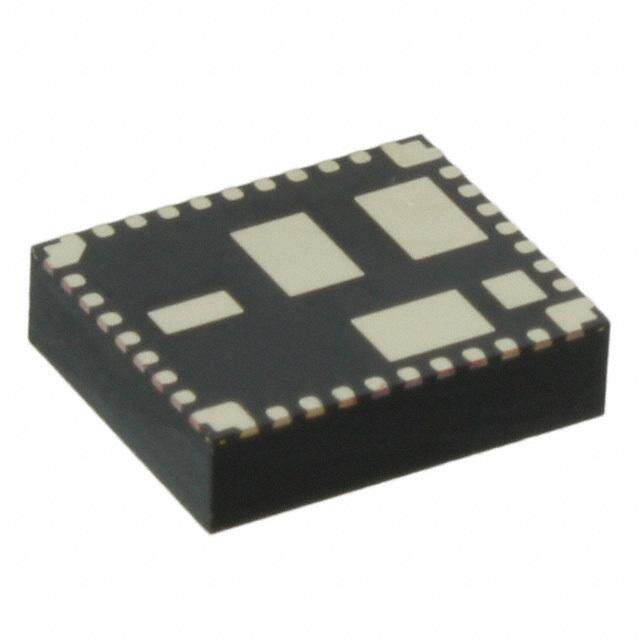
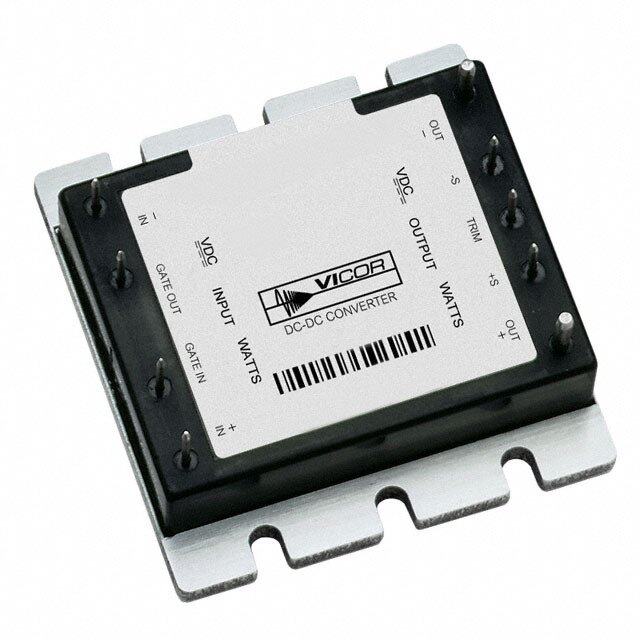

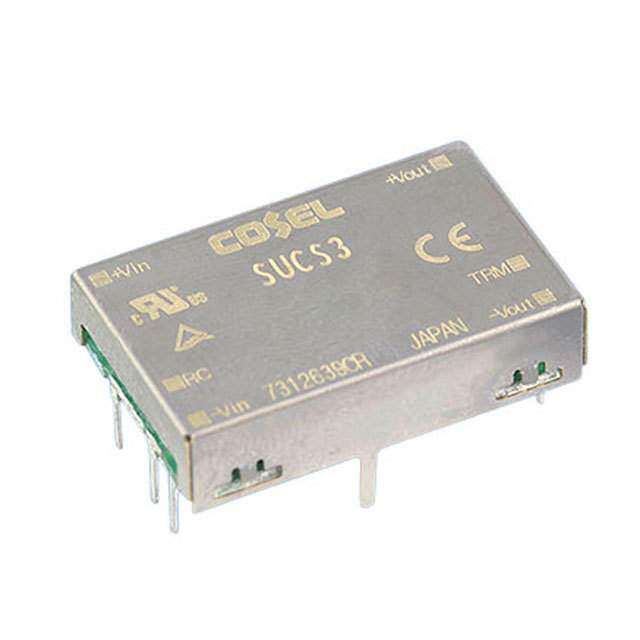
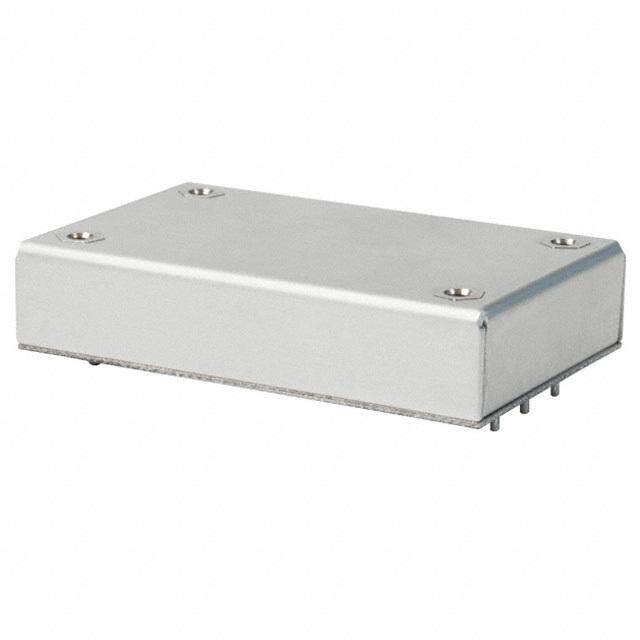
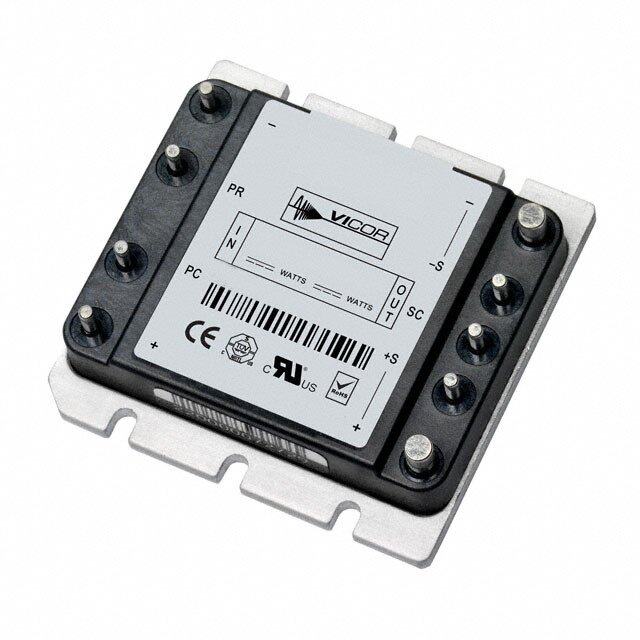

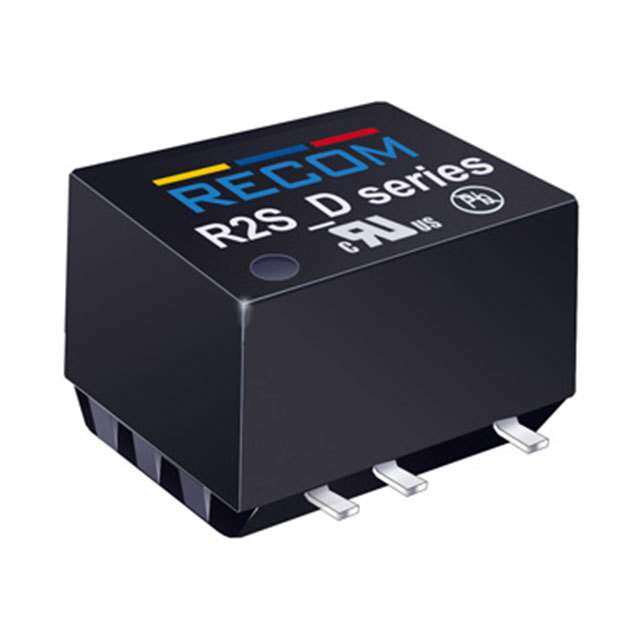

- 商务部:美国ITC正式对集成电路等产品启动337调查
- 曝三星4nm工艺存在良率问题 高通将骁龙8 Gen1或转产台积电
- 太阳诱电将投资9.5亿元在常州建新厂生产MLCC 预计2023年完工
- 英特尔发布欧洲新工厂建设计划 深化IDM 2.0 战略
- 台积电先进制程称霸业界 有大客户加持明年业绩稳了
- 达到5530亿美元!SIA预计今年全球半导体销售额将创下新高
- 英特尔拟将自动驾驶子公司Mobileye上市 估值或超500亿美元
- 三星加码芯片和SET,合并消费电子和移动部门,撤换高东真等 CEO
- 三星电子宣布重大人事变动 还合并消费电子和移动部门
- 海关总署:前11个月进口集成电路产品价值2.52万亿元 增长14.8%


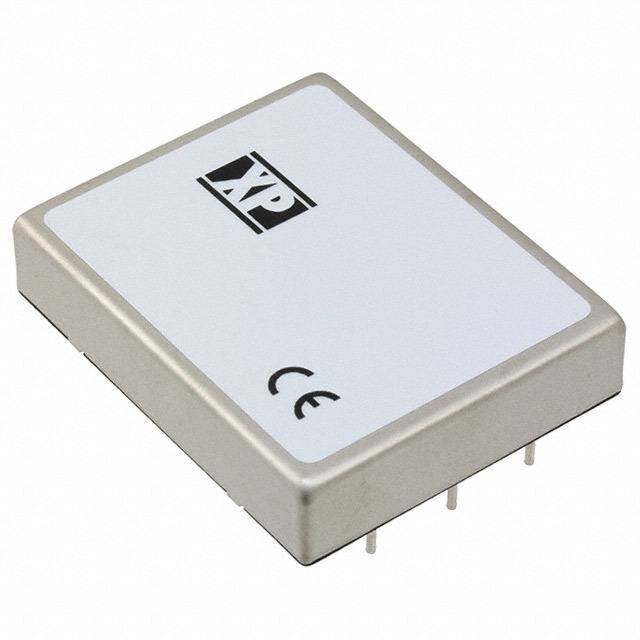


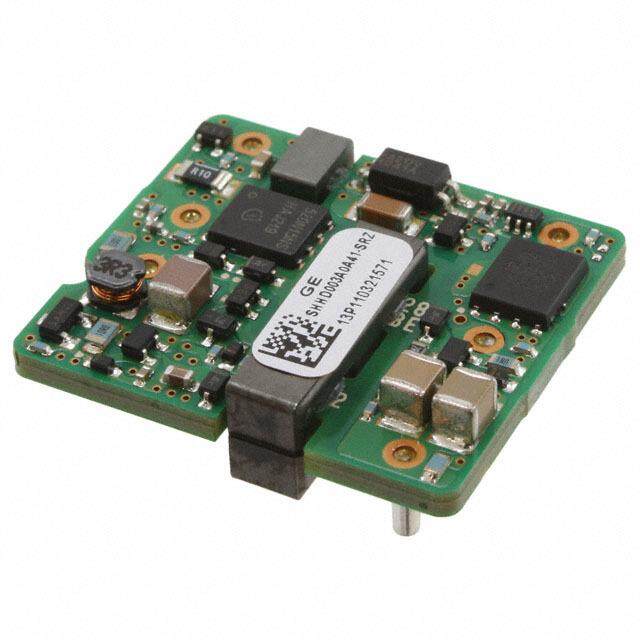
PDF Datasheet 数据手册内容提取
Product Sample & Technical Tools & Support & Folder Buy Documents Software Community TPS82670,TPS82671,TPS82672,TPS82673,TPS82674,TPS82675,TPS82676 TPS82677,TPS826711,TPS826716,TPS826721,TPS826745,TPS826765,TPS8267195 SLVSAI0J–OCTOBER2010–REVISEDMAY2016 TPS8267x 600-mA, High-Efficiency MicroSiP™ Step-Down Converter (Profile <1.0mm) 1 Features 3 Description • 90%Efficiencyat5.5MHzOperation The TPS8267x device is a complete 600mA, DC/DC 1 step-down power supply intended for low-power • 17μAQuiescentCurrent applications. Included in the package are the • WideVIN RangeFrom2.3Vto4.8V switching regulator, inductor and input/output • 5.5MHzRegulatedFrequencyOperation capacitors. No additional components are required to finishthedesign. • SpreadSpectrum,PWMFrequencyDithering • BestinClassLoadandLineTransient The TPS8267x is based on a high-frequency synchronous step-down dc-dc converter optimized for • ±2%TotalDCVoltageAccuracy battery-powered portable applications. The • AutomaticPFM/PWMModeSwitching MicroSiP™ DC/DC converter operates at a regulated • LowRippleLight-LoadPFMMode 5.5-MHz switching frequency and enters the power- savemodeoperationatlightloadcurrentstomaintain • ≥35dBV PSRR(1kHzto10kHz) IN highefficiencyovertheentireloadcurrentrange. • InternalSoftStart,120-µsStart-UpTime The PFM mode extends the battery life by reducing • IntegratedActivePower-DownSequencing the quiescent current to 17μA (typ) during light load (Optional) operation. For noise-sensitive applications, the device • CurrentOverloadandThermalShutdown has PWM spread spectrum capability providing a Protection lower noise regulated output, as well as low noise at • Sub1-mmProfileSolution the input. These features, combined with high PSRR and AC load regulation performance, make this • TotalSolutionSize <6.7mm2 device suitable to replace a linear regulator to obtain betterpowerconversionefficiency. 2 Applications The TPS8267x is packaged in a compact (2.3mm x • CellPhones,Smart-Phones 2.9mm) and low profile (1.0mm) BGA package • CameraModule,OpticalDataModule suitable for automated assembly by standard surface • WearableElectronics mountequipment. • DigitalTV,WLAN,GPSand Bluetooth™ DeviceInformation(1) Applications PARTNUMBER PACKAGE BODYSIZE(NOM) • POLApplications TPS8267x µSIP(8) 2.30x2.90mm (1) For all available packages, see the orderable addendum at theendofthedatasheet. 4 Simplified Schematic spacer EfficiencyvsOutputCurrent spacer 100 250 TPS82671SIP 90 VVIO== 3 1.6.8 V V, 225 80 Efficiency 200 DC/DC Converter PFM/PWM Operation L 70 175 2.3 VV I.N. 4.8 V CI VGINND SFWB CO 1.8M VOV D@OEU 6T00mA Efficiency - % 654000 111520050ower Loss - mW ENABLE EN MODE SELECTION 30 Power Loss 75 P 20 PFM/PWM Operation 50 GND 10 25 Copyright © 2016,Texas Instruments Incorporated 0 0 0.1 1 10 100 1000 IO- Load Current - mA 1 An IMPORTANT NOTICE at the end of this data sheet addresses availability, warranty, changes, use in safety-critical applications, intellectualpropertymattersandotherimportantdisclaimers.UNLESSOTHERWISENOTED,thisdocumentcontainsPRODUCTION DATA.
TPS82670,TPS82671,TPS82672,TPS82673,TPS82674,TPS82675,TPS82676 TPS82677,TPS826711,TPS826716,TPS826721,TPS826745,TPS826765,TPS8267195 SLVSAI0J–OCTOBER2010–REVISEDMAY2016 www.ti.com Table of Contents 1 Features.................................................................. 1 9.4 DeviceFunctionalModes........................................12 2 Applications........................................................... 1 10 ApplicationsandImplementation...................... 13 3 Description............................................................. 1 10.1 ApplicationInformation..........................................13 4 SimplifiedSchematic............................................. 1 10.2 TypicalApplication ...............................................13 5 RevisionHistory..................................................... 2 11 PowerSupplyRecommendations..................... 20 6 DeviceComparisonTable..................................... 4 12 Layout................................................................... 21 12.1 LayoutGuidelines.................................................21 7 PinConfigurationandFunctions......................... 5 12.2 LayoutExample....................................................21 8 Specifications......................................................... 5 12.3 SurfaceMountInformation...................................21 8.1 AbsoluteMaximumRatings......................................5 13 DeviceandDocumentationSupport................. 22 8.2 ESDRatings..............................................................6 13.1 DocumentationSupport........................................22 8.3 RecommendedOperatingConditions.......................6 13.2 RelatedLinks........................................................22 8.4 ThermalInformation..................................................6 13.3 CommunityResources..........................................22 8.5 ElectricalCharacteristics...........................................6 13.4 Trademarks...........................................................22 8.6 TypicalCharacteristics..............................................8 13.5 ElectrostaticDischargeCaution............................22 9 DetailedDescription.............................................. 9 13.6 Glossary................................................................23 9.1 Overview...................................................................9 14 Mechanical,Packaging,andOrderable 9.2 FunctionalBlockDiagram.........................................9 Information........................................................... 23 9.3 FeatureDescription.................................................10 5 Revision History NOTE:Pagenumbersforpreviousrevisionsmaydifferfrompagenumbersinthecurrentversion. ChangesfromRevisionI(November2014)toRevisionJ Page • AddedTPS8267195partnumbertodatasheet .................................................................................................................... 1 • AddedTPS8267195toElectricalCharacteristicstable ......................................................................................................... 7 • ChangedLayoutExamplefigure,Note4valuefrom"...lessthan0.5mm.."to"...lessthan0.5µm.." ............................... 21 ChangesfromRevisionH(October2014)toRevisionI Page • MovedT spectoAbsoluteMaximumRatingstableforclarification .................................................................................. 5 stg • ChangedHandlingRatingstoESDRatingsandreplacedMIN/MAXvalueswith±VALUEforclarification ........................ 6 • AddedTPS826716dataandremovedProductPreviewnote............................................................................................... 7 ChangesfromRevisionG(September2014)toRevisionH Page • AddedTPS826716toDeviceComparisonTableasProductPreview.................................................................................. 4 ChangesfromRevisionF(November2012)toRevisionG Page • AddedDeviceInformationandHandlingRatingtables,FeatureDescriptionsection,DeviceFunctionalModes, ApplicationandImplementationsection,PowerSupplyRecommendationssection,Layoutsection,Deviceand DocumentationSupportsection,andMechanical,Packaging,andOrderableInformationsection. .................................... 1 • AddeddeviceTPS826721 ..................................................................................................................................................... 4 ChangesfromRevisionE(October2012)toRevisionF Page • AddedTPS826745toHeader................................................................................................................................................ 1 2 SubmitDocumentationFeedback Copyright©2010–2016,TexasInstrumentsIncorporated ProductFolderLinks:TPS82670 TPS82671 TPS82672 TPS82673 TPS82674 TPS82675 TPS82676TPS82677 TPS826711 TPS826716 TPS826721 TPS826745 TPS826765 TPS8267195
TPS82670,TPS82671,TPS82672,TPS82673,TPS82674,TPS82675,TPS82676 TPS82677,TPS826711,TPS826716,TPS826721,TPS826745,TPS826765,TPS8267195 www.ti.com SLVSAI0J–OCTOBER2010–REVISEDMAY2016 ChangesfromRevisionD(April2012)toRevisionE Page • AddedTPS826765toHeader................................................................................................................................................ 1 ChangesfromRevisionC(November2011)toRevisionD Page • AddeddevicesTPS82670,TPS82673,andTPS82674toHeader ....................................................................................... 1 ChangesfromRevisionB(August2011)toRevisionC Page • AddeddeviceTPS82672toHeaderinfo................................................................................................................................ 1 ChangesfromRevisionA(April2011)toRevisionB Page • AddedTPS82676partnumbertodatasheetheader ........................................................................................................... 1 ChangesfromOriginal(October2010)toRevisionA Page • AddeddevicesTPS82677andTPS82678toHeaderinfo..................................................................................................... 1 • Addedcopyrightattributionforspectrumillustrations........................................................................................................... 11 Copyright©2010–2016,TexasInstrumentsIncorporated SubmitDocumentationFeedback 3 ProductFolderLinks:TPS82670 TPS82671 TPS82672 TPS82673 TPS82674 TPS82675 TPS82676TPS82677 TPS826711 TPS826716 TPS826721 TPS826745 TPS826765 TPS8267195
TPS82670,TPS82671,TPS82672,TPS82673,TPS82674,TPS82675,TPS82676 TPS82677,TPS826711,TPS826716,TPS826721,TPS826745,TPS826765,TPS8267195 SLVSAI0J–OCTOBER2010–REVISEDMAY2016 www.ti.com 6 Device Comparison Table PARTNUMBER (1) OUTPUTVOLTAGE DEVICESPECIFICFEATURE PACKAGEMARKING PWMSpreadSpectrumModulation TPS82670 1.86V LowPFMOutputRippleVoltage YK OutputCapacitorDischarge PWMSpreadSpectrumModulation TPS82671 1.8V RA LowPFMOutputRippleVoltage PWMSpreadSpectrumModulation TPS826711 1.8V LowPFMOutputRippleVoltage YW OutputCapacitorDischarge PWMSpreadSpectrumModulation TPS826716 1.6V GS LowPFMOutputRippleVoltage PWMSpreadSpectrumModulation TPS82672 1.5V WD LowPFMOutputRippleVoltage PWMSpreadSpectrumModulation TPS826721 2.1V EO LowPFMOutputRippleVoltage PWMSpreadSpectrumModulation TPS82673 1.26V LowPFMOutputRippleVoltage YL OutputCapacitorDischarge PWMSpreadSpectrumModulation TPS82674 1.2V LowPFMOutputRippleVoltage SW OutputCapacitorDischarge PWMSpreadSpectrumModulation TPS826745 1.225V LowPFMOutputRippleVoltage B5 OutputCapacitorDischarge PWMSpreadSpectrumModulation TPS82675 1.2V RB LowPFMOutputRippleVoltage PWMSpreadSpectrumModulation TPS82676 1.1V LowPFMOutputRippleVoltage TU OutputCapacitorDischarge PWMSpreadSpectrumModulation TPS826765 1.05V LowPFMOutputRippleVoltage AN OutputCapacitorDischarge TPS82677 1.2V OutputCapacitorDischarge SK PWMSpreadSpectrumModulation TPS8267195 1.95V 4A LowPFMOutputRippleVoltage (1) Forthemostcurrentpackageandorderinginformation,seethePackageOptionAddendumattheendofthisdocument,orseetheTI websiteatwww.ti.com 4 SubmitDocumentationFeedback Copyright©2010–2016,TexasInstrumentsIncorporated ProductFolderLinks:TPS82670 TPS82671 TPS82672 TPS82673 TPS82674 TPS82675 TPS82676TPS82677 TPS826711 TPS826716 TPS826721 TPS826745 TPS826765 TPS8267195
TPS82670,TPS82671,TPS82672,TPS82673,TPS82674,TPS82675,TPS82676 TPS82677,TPS826711,TPS826716,TPS826721,TPS826745,TPS826765,TPS8267195 www.ti.com SLVSAI0J–OCTOBER2010–REVISEDMAY2016 7 Pin Configuration and Functions space SIP-8 SIP-8 (TOPVIEW) (BOTTOM VIEW) VOUT A1 A2 A3 VIN VIN A3 A2 A1 VOUT MODE B1 B2 EN EN B2 B1 MODE GND C1 C2 C3 GND GND C3 C2 C1 GND space PinFunctions PIN I/O DESCRIPTION NAME NO. VOUT A1 O Poweroutputpin.ApplyoutputloadbetweenthispinandGND. VIN A2,A3 I TheVINpinssupplycurrenttotheTPS8267xinternalregulator. Thisistheenablepinofthedevice.Connectthispintogroundtoforcetheconverterinto EN B2 I shutdownmode.PullthispintoV toenablethedevice.Thispinmustnotbeleftfloatingand I mustbeterminated. Thisisthemodeselectionpinofthedevice.Thispinmustnotbeleftfloatingandmustbe terminated. MODE=LOW:Thedeviceisoperatinginregulatedfrequencypulsewidthmodulationmode MODE B1 I (PWM)athigh-loadcurrentsandinpulsefrequencymodulationmode(PFM)atlightload currents. MODE=HIGH:Low-noisemodeisenabledandregulatedfrequencyPWMoperationisforced. GND C1,C2,C3 – Groundpin. 8 Specifications 8.1 Absolute Maximum Ratings overoperatingfree-airtemperaturerange(unlessotherwisenoted)(1) MIN MAX UNIT VoltageatVIN(3) –0.3 6 V VoltageatVIN(TPS826721)(3) -0.3 5.5 V (2) I VoltageatVOUT –0.3 3.6 V VoltageatEN,MODE –0.3 V +0.3 V IN Powerdissipation Internallylimited T Operatingtemperaturerange(4) –40 85 °C A T (max) Maximuminternaloperatingtemperature 125 °C INT T Storagetemperature –55 125 °C stg (1) Stressesbeyondthoselistedunderabsolutemaximumratingsmaycausepermanentdamagetothedevice.Thesearestressratings onlyandfunctionaloperationofthedeviceattheseoranyotherconditionsbeyondthoseindicatedunderrecommendedoperating conditionsisnotimplied.Exposuretoabsolute-maximum-ratedconditionsforextendedperiodsmayaffectdevicereliability. (2) Allvoltagevaluesarewithrespecttonetworkgroundterminal. (3) Operationabove4.8Vinputvoltageforextendedperiodsmayaffectdevicereliability. (4) Inapplicationswherehighpowerdissipationand/orpoorpackagethermalresistanceispresent,themaximumambienttemperaturemay havetobederated.Maximumambienttemperature(T )isdependentonthemaximumoperatingtemperature(T ),the A(max) INT(max) maximumpowerdissipationofthedeviceintheapplication(P ),andthejunction-to-ambientthermalresistanceofthepart/package D(max) intheapplication(R ),asgivenbythefollowingequation:T =T –(R XP ).Toachieveoptimumperformance,itis θJA A(max) J(max) θJA D(max) recommendedtooperatethedevicewithamaximuminternaltemperatureof105°C. Copyright©2010–2016,TexasInstrumentsIncorporated SubmitDocumentationFeedback 5 ProductFolderLinks:TPS82670 TPS82671 TPS82672 TPS82673 TPS82674 TPS82675 TPS82676TPS82677 TPS826711 TPS826716 TPS826721 TPS826745 TPS826765 TPS8267195
TPS82670,TPS82671,TPS82672,TPS82673,TPS82674,TPS82675,TPS82676 TPS82677,TPS826711,TPS826716,TPS826721,TPS826745,TPS826765,TPS8267195 SLVSAI0J–OCTOBER2010–REVISEDMAY2016 www.ti.com 8.2 ESD Ratings VALUE UNIT Humanbodymodel(HBM)ESDstressvoltage(2) ±2000 V V (1) Chargedevicemodel(CDM)ESDstressvoltage(3) ±1000 ESD Machinemodel(MM)ESDstressvoltage(4) ±200 V (1) Electrostaticdischarge(ESD)tomeasuredevicesensitivityandimmunitytodamagecausedbyassemblylineelectrostaticdischargesin tothedevice. (2) LevellistedaboveisthepassinglevelperANSI,ESDA,andJEDECJS-001.JEDECdocumentJEP155statesthat500-VHBMallows safemanufacturingwithastandardESDcontrolprocess. (3) LevellistedaboveisthepassinglevelperEIA-JEDECJESD22-C101.JEDECdocumentJEP157statesthat250-VCDMallowssafe manufacturingwithastandardESDcontrolprocess. (4) Themachinemodelisa200-pFcapacitordischargeddirectlyintoeachpin. 8.3 Recommended Operating Conditions overoperatingfree-airtemperaturerange(unlessotherwisenoted) MIN NOM MAX UNIT V Inputvoltagerange 2.3 4.8(1) V IN I Outputcurrentrange TPS82671toTPS826765 0 600 mA O TPS82670toTPS82676 TPS826711,TPS826716, 0 2.5 µF Additionaloutputcapacitance(PFM/PWMoperation)(2) TPS826721,TPS826765, TPS8267195 TPS82677 0 4 µF Additionaloutputcapacitance(PWMoperation)(2) 0 7 µF T Ambienttemperature –40 +85 °C A T Operatingjunctiontemperature –40 +125 °C J (1) Operationabove4.8Vinputvoltageforextendedperiodsmayaffectdevicereliability. (2) Incertainapplicationslargercapacitorvaluescanbetolerable,seeOutputCapacitorSelectionsectionformoredetails. 8.4 Thermal Information TPS8267x THERMALMETRIC(1) SIP UNIT 8PINS R Junction-to-ambient(top)thermalresistance 125 θJA Junction-to-ambient(bottom)thermalresistance 70 R Junction-to-case(top)thermalresistance - θJCtop R Junction-to-boardthermalresistance - °C/W θJB ψ Junction-to-topcharacterizationparameter - JT ψ Junction-to-boardcharacterizationparameter - JB R Junction-to-case(bottom)thermalresistance - θJCbot (1) Formoreinformationabouttraditionalandnewthermalmetrics,seetheICPackageThermalMetricsapplicationreport,SPRA953. 8.5 Electrical Characteristics MinimumandmaximumvaluesareatV =2.3Vto5.5V,V =1.8V,EN=1.8V,AUTOmodeandT =–40°Cto85°C; IN OUT A CircuitofParameterMeasurementInformationsection(unlessotherwisenoted).TypicalvaluesareatV =3.6V,V = IN OUT 1.8V,EN=1.8V,AUTOmodeandT =25°C(unlessotherwisenoted). A PARAMETER TESTCONDITIONS MIN TYP MAX UNIT SUPPLYCURRENT IO=0mA.Devicenotswitching 17 40 μA IQ Operatingquiescentcurrent IO=0mA.PWMoperation 5.8 mA ISD Shutdowncurrent EN=GND 0.5 5 μA TPS8267195only 2.08 2.14 UVLO Undervoltagelockoutthreshold V allotherversions 2.05 2.1 6 SubmitDocumentationFeedback Copyright©2010–2016,TexasInstrumentsIncorporated ProductFolderLinks:TPS82670 TPS82671 TPS82672 TPS82673 TPS82674 TPS82675 TPS82676TPS82677 TPS826711 TPS826716 TPS826721 TPS826745 TPS826765 TPS8267195
TPS82670,TPS82671,TPS82672,TPS82673,TPS82674,TPS82675,TPS82676 TPS82677,TPS826711,TPS826716,TPS826721,TPS826745,TPS826765,TPS8267195 www.ti.com SLVSAI0J–OCTOBER2010–REVISEDMAY2016 Electrical Characteristics (continued) MinimumandmaximumvaluesareatV =2.3Vto5.5V,V =1.8V,EN=1.8V,AUTOmodeandT =–40°Cto85°C; IN OUT A CircuitofParameterMeasurementInformationsection(unlessotherwisenoted).TypicalvaluesareatV =3.6V,V = IN OUT 1.8V,EN=1.8V,AUTOmodeandT =25°C(unlessotherwisenoted). A PARAMETER TESTCONDITIONS MIN TYP MAX UNIT PROTECTION Thermalshutdown 140 °C Thermalshutdownhysteresis 10 °C ILIM PeakInputCurrentLimit 1100 mA Inputcurrentlimitundershort-circuit ISC conditions VOshortedtoground 13.5 mA ENABLE,MODE VIH High-levelinputvoltage 1.0 V VIL Low-levelinputvoltage 0.4 V Ilkg Inputleakagecurrent InputconnectedtoGNDorVIN 0.01 1.5 μA OSCILLATOR fSW Oscillatorfrequency IO=0mA.PWMoperation 4.9 5.45 6.0 MHz OUTPUT TTPPSS8822667701 2P.F5MV/≤PWVIM≤o4p.8eVra,t0iomnA≤IO≤600mA 0.98×VNOM VNOM 1.03×VNOM V TPS826711 TPS826716 2P.F5MV/≤PWVIM≤o5p.5eVra,t0iomnA≤IO≤600mA 0.98×VNOM VNOM 1.04×VNOM V TPS82672 TPS826721 TPS82673 TPS82674 TPS826745 2P.W5VM≤oVpeI≤ra5ti.o5nV,0mA≤IO≤600mA 0.98×VNOM VNOM 1.02×VNOM V TPS82675 TPS82676 RegulatedDC TPS826765 VOUT outputvoltage 2P.F5MV/≤PWVIM≤o4p.8eVra,t0iomnA≤IO≤600mA 0.975×VNOM VNOM 1.035×VNOM V TPS8267195 2P.F5MV/≤PWVIM≤o5p.5eVra,t0iomnA≤IO≤600mA 0.975×VNOM VNOM 1.045×VNOM V 2P.W5VM≤oVpeI≤ra5ti.o5nV,0mA≤IO≤600mA 0.975×VNOM VNOM 1.025×VNOM V 2P.F5MV/≤PWVIM≤o4p.8eVra,t0iomnA≤IO≤600mA 0.98×VNOM VNOM 1.04×VNOM V TPS82677 2P.W5VM≤oVpeI≤ra5ti.o5nV,0mA≤IO≤600mA 0.98×VNOM VNOM 1.02×VNOM V Lineregulation VI=VO+0.5V(min2.5V)to5.5V,IO=200mA 0.23 %/V Loadregulation IO=0mAto600mA.PWMoperation –0.00085 %/mA Feedbackinputresistance 480 kΩ TPS82671 TPS826711 IO=1mA,VO=1.8V 19 mVPP TPS826716 IO=1mA,VO=1.6V 19 mVPP TPS826721 IO=1mA,VO=2.1V 19 mVPP TPS82673 Power-savemode ΔVO ripplevoltage TTPPSS88226677445 IO=1mA,VO=1.2V 16 mVPP TPS82675 TPS82676 IO=1mA,VO=1.1V 16 mVPP TPS826765 IO=1mA,VO=1.05V 16 mVPP TPS82677 IO=1mA,VO=1.2V 25 mVPP TPS82671 Start-uptime TPS826711 IO=0mA,TimefromactiveENtoVO 120 μs Dischargeresistor rDIS forpower-down Devicesfeaturingactivedischarge 70 150 Ω sequence Copyright©2010–2016,TexasInstrumentsIncorporated SubmitDocumentationFeedback 7 ProductFolderLinks:TPS82670 TPS82671 TPS82672 TPS82673 TPS82674 TPS82675 TPS82676TPS82677 TPS826711 TPS826716 TPS826721 TPS826745 TPS826765 TPS8267195
TPS82670,TPS82671,TPS82672,TPS82673,TPS82674,TPS82675,TPS82676 TPS82677,TPS826711,TPS826716,TPS826721,TPS826745,TPS826765,TPS8267195 SLVSAI0J–OCTOBER2010–REVISEDMAY2016 www.ti.com 8.6 Typical Characteristics 28 6 26 IO= 150 mA TA= 85°C 24 TA= 25°C 5.5 nt -Am 122802 ncy - MHz 5 IIOO== 430000 mmAA e e - Quiescent CurrQ111102468 TA= -40°C - Switching Frequ43..455 IO= 500 mA I 6 fS 4 3 2 0 2.5 2.7 3 3.3 3.6 3.9 4.2 4.5 4.8 2.5 2.7 2.9 3.1 3.3 3.5 3.7 3.9 4.1 4.3 4.5 VI- Input Voltage - V VI- Input Voltage - V V =1.8V O Figure1.QuiescentCurrentvs.InputVoltage Figure2.PWMSwitchingFrequencyvs.InputVoltage 85 5 m 80 IO= 10 mA B 75 PFM Operation 4.5 m n Ratio - d 667050 IPOW=M 1 5O0p merAation Mode) - V 3.55 mm ectio 5505 PFM 3 m Power Supply Rej 223344050505 IPOW=M 4 0O0p merAation us Output Noise ( 21..525 mmm VVVIII=== 234...762 VVV PSRR - 11055 Spurio 5010 mm 0 0.01 0.1 1 10 100 1000 50 n 0 Span = 1 MHz 10 f - Frequency - kHz f - Frequency - MHz V =3.6V V =1.8V (TPS82671) I O V =1.8V R =150Ω (TPS82671) O L Figure3.PowerSupplyRejectionRatiovs.Frequency Figure4.SpuriousOutputNoise(PFMMode)vs.Frequency 500m 10 450m PWM Mode) - V 334050000mmm VI= 4.2 V ensity -HzµV/V 1 Output Noise ( 221505000mmm VI= 2.7 V ectral Noise D 0.1 IOUIOTU=T 1=0 1 m50A m(PAF(MP WMMod Me)ode) purious 100m VI= 3.6 V utput Sp 0.01 S 50m O 5 n 0.001 0 Span = 4 MHz 40 0.1 1 10 100 1000 f - Frequency - MHz f - Frequency - kHz VO=1.8V RL=12Ω (TPS82671) VI=3.6V VO=1.8V (TPS82671) Figure5.SpuriousOutputNoise(PWMMode)vs.Frequency Figure6.OutputSpectralNoiseDensityvs.Frequency 8 SubmitDocumentationFeedback Copyright©2010–2016,TexasInstrumentsIncorporated ProductFolderLinks:TPS82670 TPS82671 TPS82672 TPS82673 TPS82674 TPS82675 TPS82676TPS82677 TPS826711 TPS826716 TPS826721 TPS826745 TPS826765 TPS8267195
TPS82670,TPS82671,TPS82672,TPS82673,TPS82674,TPS82675,TPS82676 TPS82677,TPS826711,TPS826716,TPS826721,TPS826745,TPS826765,TPS8267195 www.ti.com SLVSAI0J–OCTOBER2010–REVISEDMAY2016 9 Detailed Description 9.1 Overview The TPS8267x is a stand-alone, synchronous, step-down converter. The converter operates at a regulated 5.5- MHz frequency pulse width modulation (PWM) at moderate to heavy load currents. At light load currents, the TPS8267xconverteroperatesinpower-savemodewithpulsefrequencymodulation(PFM). The converter uses a unique frequency-locked ring-oscillating modulator to achieve best-in-class load and line response. One key advantage of the non-linear architecture is that there is no traditional feed-back loop. The loop response to change in V is essentially instantaneous, which explains the transient response. Although this O type of operation normally results in a switching frequency that varies with input voltage and load current, an internal frequency lock loop (FLL) holds the switching frequency constant over a large range of operating conditions. Combined with best-in-class load and line-transient response characteristics, the low quiescent current of the device (approximately 17μA) helps to maintain high efficiency at light load while that current preserves a fast transientresponseforapplicationsthatrequiretightoutputregulation. The TPS8267x integrates an input current limit to protect the device against heavy load or short circuits and features an undervoltage lockout circuit to prevent the device from misoperation at low input voltages. Fully functionaloperationispermitteddownto2.1Vinputvoltage. 9.2 Functional Block Diagram MODE EN VIN C I 2.2 µF DC/DC CONVERTER Undervoltage VIN Lockout Bias Supply Soft-Start Negative Inductor Current Detect Bandgap VREF=0.8V Power Save Mode Switching Thermal Current Limit Shutdown Detect Frequency Control R1 – L Gate Driver VOUT R2 VREF ShootATnhtir-ough 1µH C O + 4.7 µF Feedback Divider GND Copyright © 2016,Texas Instruments Incorporated Copyright©2010–2016,TexasInstrumentsIncorporated SubmitDocumentationFeedback 9 ProductFolderLinks:TPS82670 TPS82671 TPS82672 TPS82673 TPS82674 TPS82675 TPS82676TPS82677 TPS826711 TPS826716 TPS826721 TPS826745 TPS826765 TPS8267195
TPS82670,TPS82671,TPS82672,TPS82673,TPS82674,TPS82675,TPS82676 TPS82677,TPS826711,TPS826716,TPS826721,TPS826745,TPS826765,TPS8267195 SLVSAI0J–OCTOBER2010–REVISEDMAY2016 www.ti.com 9.3 Feature Description 9.3.1 Power-SaveMode If the load current decreases, the converter enters power-save mode automatically. During power-save mode, the converter operates in discontinuous current, (DCM) single-pulse PFM mode, which produces a low output ripplecomparedwithotherPFMarchitectures. When in power-save mode, the converter resumes its operation when the output voltage falls below the nominal voltage. The converter ramps up the output voltage with a minimum of one pulse and goes into power-save modewhentheoutputvoltageiswithinitsregulationlimits. The IC exits PFM mode and enters PWM mode when the output current can no longer be supported in PFM mode. As a consequence, the DC output voltage is typically positioned approximately 0.5% above the nominal outputvoltage.ThetransitionbetweenPFMandPWMisseamless. PFM Mode at Light Load PFM Ripple Nominal DC Output Voltage PWM Mode at Heavy Load Figure7. OperationInPFMModeAndTransferToPWMMode 9.3.2 ModeSelection The MODE pin selects the operating mode of the device. Connecting the MODE pin to GND enables the automatic PWM and power-save mode operation. The converter operates in regulated frequency PWM mode at moderate to heavy loads, and operates in PFM mode during light loads. This type of operation maintains high efficiencyoverawideloadcurrentrange. Pulling the MODE pin high forces the converter to operate in PWM mode even at light-load currents. The advantage is that the converter modulates its switching frequency according to a spread spectrum PWM modulationtechniquethatallowssimplefilteringoftheswitchingharmonicsinnoise-sensitiveapplications.Inthis mode,theefficiencyislowerwhencomparedtothepower-savemodeduringlightloads. For additional flexibility, it is possible to switch from power-save mode to PWM mode during operation. This type ofoperationallowsefficientpowermanagementbyadjustingtheoperationoftheconvertertothespecificsystem requirements. 9.3.3 SpreadSpectrum,PWMFrequencyDithering The goal of spread spectrum architecture is to spread out the emitted RF energy over a larger frequency range so that any resulting electromagnetic interference (EMI) is similar to white noise. The end result is a spectrum that is continuous and lower in peak amplitude. Spread spectrum makes it easier to comply with EMI standards. It also makes it easier to comply with the power supply ripple requirements in cellular and non-cellular wireless applications. Radio receivers are typically susceptible to narrowband noise that is focused on specific frequencies. Switching regulators can be particularly troublesome in applications where electromagnetic interference (EMI) is a concern. Switching regulators operate on a cycle-by-cycle basis to transfer power to an output. In most cases, the frequency of operation is either fixed or regulated, based on the output load. This method of conversion creates large components of noise at the frequency of operation (fundamental) and multiples of the operating frequency(harmonics). 10 SubmitDocumentationFeedback Copyright©2010–2016,TexasInstrumentsIncorporated ProductFolderLinks:TPS82670 TPS82671 TPS82672 TPS82673 TPS82674 TPS82675 TPS82676TPS82677 TPS826711 TPS826716 TPS826721 TPS826745 TPS826765 TPS8267195
TPS82670,TPS82671,TPS82672,TPS82673,TPS82674,TPS82675,TPS82676 TPS82677,TPS826711,TPS826716,TPS826721,TPS826745,TPS826765,TPS8267195 www.ti.com SLVSAI0J–OCTOBER2010–REVISEDMAY2016 Feature Description (continued) The spread spectrum architecture varies the switching frequency by approximately ±10% of the nominal switching frequency, thereby significantly reduces the peak radiated and conducting noise on both the input and output supplies. The frequency dithering scheme is modulated with a triangle profile and a modulation frequency f . m 0 dBV FENV,PEAK Dfc Dfc Non-modulated harmonic F1 Side-band harmonics window after modulation 0 dBVref B=2×f ×(1+m )=2×(Df +f ) m f c m B=2×f ×(1+m )=2×(Df +f ) B =2×f ×(1+m ×h) m f c m h m f Figure8.SpectrumOfAFrequencyModulatedSin. Figure9.SpreadBandsOfHarmonicsIn WaveWithSinusoidalVariationInTime ModulatedSquareSignals (1) Figure 8 and Figure 9 show that after modulation the sideband harmonic is attenuated when compared to the non-modulated harmonic, and when the harmonic energy is spread into a certain frequency band. The higher the modulationindex(mf)thelargertheattenuation. δ ´ ƒ m = c ƒ ƒ m (1) With: f isthecarrierfrequency(i.e.nominalswitchingfrequency) c f isthemodulatingfrequency(approx.0.016*f ) m c δisthemodulationratio(approx0.1) Dƒ d= c ƒ c (2) The maximum switching frequency is limited by the process and by the parameter modulation ratio (δ), together with f , which is the bandwidth of the side-band harmonics around the carrier frequency f . The bandwidth of a m c frequencymodulatedwaveformisapproximatelygivenbytheCarson’sruleandcanbesummarizedas: B=2 ´ ¦m ´(1+ m¦)=2 ´ (D¦c + ¦m) (3) f < RBW: The receiver is not able to distinguish individual side-band harmonics; so, several harmonics are m addedintheinputfilterandthemeasuredvalueishigherthanexpectedintheoreticalcalculations. f > RBW: The receiver is able to properly measure each individual side-band harmonic separately, so that the m measurementsmatchthetheoreticalcalculations. (1) Spectrumillustrationsandformulae(Figure8andFigure9)copyrightIEEETRANSACTIONSONELECTROMAGNETIC COMPATIBILITY,VOL.47,NO.3,AUGUST2005.SeeReferencesSectionforfullcitation. Copyright©2010–2016,TexasInstrumentsIncorporated SubmitDocumentationFeedback 11 ProductFolderLinks:TPS82670 TPS82671 TPS82672 TPS82673 TPS82674 TPS82675 TPS82676TPS82677 TPS826711 TPS826716 TPS826721 TPS826745 TPS826765 TPS8267195
TPS82670,TPS82671,TPS82672,TPS82673,TPS82674,TPS82675,TPS82676 TPS82677,TPS826711,TPS826716,TPS826721,TPS826745,TPS826765,TPS8267195 SLVSAI0J–OCTOBER2010–REVISEDMAY2016 www.ti.com 9.4 Device Functional Modes 9.4.1 Enable The TPS8267x device starts operation when EN is set high and starts up with the soft start as previously described.Forproperoperation,theENpinmustbeterminatedandmustnotbeleftfloating. Pulling the EN pin low forces the device into shutdown. In this mode, all internal circuits are turned off and the V currentreducestothedeviceleakagecurrent,whichistypicallyafewhundrednanoamps. IN The TPS8267x device can actively discharge the output capacitor when it turns off. The integrated discharge resistor has a typical resistance of 100 Ω. The required time to ramp down the output voltage depends on the loadcurrentandthecapacitancepresentattheoutputnode. 9.4.2 SoftStart The TPS8267x has an internal soft-start circuit that limits the in-rush current during start-up. This circuit limits input voltage drop when a battery or a high-impedance power source is connected to the input of the MicroSiP™ DC/DCconverter. The soft-start system progressively increases the switching on-time from a minimum pulse-width of 35ns as a function of the output voltage. This mode of operation continues for approximately 100μs after the enable. If the outputvoltagedoesnotreachitstargetvaluewithinthesoft-starttime,thesoft-starttransitionstoasecondmode ofoperation. If the output voltage rises above approximately 0.5V, the converter increases the input current limit and thus enables the power supply to come up properly. The start-up time mainly depends on the capacitance present at theoutputnodeandtheloadcurrent. 12 SubmitDocumentationFeedback Copyright©2010–2016,TexasInstrumentsIncorporated ProductFolderLinks:TPS82670 TPS82671 TPS82672 TPS82673 TPS82674 TPS82675 TPS82676TPS82677 TPS826711 TPS826716 TPS826721 TPS826745 TPS826765 TPS8267195
TPS82670,TPS82671,TPS82672,TPS82673,TPS82674,TPS82675,TPS82676 TPS82677,TPS826711,TPS826716,TPS826721,TPS826745,TPS826765,TPS8267195 www.ti.com SLVSAI0J–OCTOBER2010–REVISEDMAY2016 10 Applications and Implementation NOTE Information in the following applications sections is not part of the TI component specification, and TI does not warrant its accuracy or completeness. TI’s customers are responsible for determining suitability of components for their purposes. Customers should validateandtesttheirdesignimplementationtoconfirmsystemfunctionality. 10.1 Application Information The TPS8267x devices are complete power supply modules, not needing further external devices. The devices are optimized to work best with the components populated. However application conditions might demand for differentinputand/oroutputcapacitancevalues. 10.2 Typical Application TPS8267XSIP DC/DC Converter L VIN VIN SW VOUT C C I O GND FB MODE ENABLE EN MODE SELECTION GND Copyright © 2016,Texas Instruments Incorporated Figure10. MicroSIPConverterModuleSchematic 10.2.1 DesignRequirements For applications requiring additional input and/or output capacitance, the following procedures should be considered.ForthemaximumrecommendedvaluesseeRecommendedOperatingConditions. 10.2.2 DetailedDesignProcedure 10.2.2.1 InputCapacitorSelection Because of the pulsating input current nature of the buck converter, a low ESR input capacitor is required to prevent large voltage transients that can cause misbehavior of the device or interference in other circuits in the system. For most applications, the input capacitor that is integrated into the TPS8267x should be sufficient. If the application exhibits a noisy or erratic switching frequency, experiment with additional input ceramic capacitance tofindaremedy. The TPS8267x uses a tiny ceramic input capacitor. When a ceramic capacitor is combined with trace or cable inductance, such as from a wall adapter, a load step at the output can induce ringing at the VIN pin. This ringing can couple to the output and be mistaken as loop instability or can even damage the part. In this circumstance, additional "bulk" capacitance, such as electrolytic or tantalum, should be placed between the input of the converter and the power source lead to reduce ringing that can occur between the inductance of the power sourceleadsandC. I 10.2.2.2 OutputCapacitorSelection The advanced, fast-response, voltage mode, control scheme of the TPS8267x allows the use of a tiny ceramic outputcapacitor(C ).Formostapplications,theoutputcapacitorintegratedintheTPS8267xissufficient. O Copyright©2010–2016,TexasInstrumentsIncorporated SubmitDocumentationFeedback 13 ProductFolderLinks:TPS82670 TPS82671 TPS82672 TPS82673 TPS82674 TPS82675 TPS82676TPS82677 TPS826711 TPS826716 TPS826721 TPS826745 TPS826765 TPS8267195
TPS82670,TPS82671,TPS82672,TPS82673,TPS82674,TPS82675,TPS82676 TPS82677,TPS826711,TPS826716,TPS826721,TPS826745,TPS826765,TPS8267195 SLVSAI0J–OCTOBER2010–REVISEDMAY2016 www.ti.com Typical Application (continued) At nominal load current, the device operates in PWM mode; the overall output voltage ripple is the sum of the voltage step that is caused by the output capacitor ESL and the ripple current that flows through the output capacitor impedance. At light loads, the output capacitor limits the output ripple voltage and provides holdup duringlargeloadtransitions. The TPS8267x is designed as a Point-Of-Load (POL) regulator, to operate stand-alone without requiring any additional capacitance. Adding a 2.2μF ceramic output capacitor (X7R or X5R dielectric) generally works from a converterstabilitypointofview,butdoesnotnecessarilyhelptominimizetheoutputripplevoltage. For best operation (i.e. optimum efficiency over the entire load current range, proper PFM/PWM auto transition), the TPS8267xSIP requires a minimum output ripple voltage in PFM mode. The typical output voltage ripple is ca. 1% of the nominal output voltage V . The PFM pulses are time controlled resulting in a PFM output voltage O ripple and PFM frequency that depends (first order) on the capacitance seen at the MicroSiPTM DC/DC converter'soutput. In applications requiring additional output bypass capacitors located close to the load, care should be taken to ensure proper operation. If the converter exhibits marginal stability or erratic switching frequency, experiment withadditionallowvalueseriesresistance(e.g.50to100mΩ)intheoutputpathtofindaremedy. Because the damping factor in the output path is directly related to several resistive parameters (e.g. inductor DCR, power-stage r , PWB DC resistance, load switches r …) that are temperature dependant, the DS(on) DS(on) converter small and large signal behavior must be checked over the input voltage range, load current range and temperaturerange. Theeasiestsanitytestistoevaluate,directlyattheconverter’soutput,thefollowingaspects: • PFM/PWMefficiency • PFM/PWMandforcedPWMloadtransientresponse Duringtherecoverytimefromaloadtransient,theoutputvoltagecanbemonitoredforsettlingtime,overshootor ringingthathelpsjudgetheconverter’sstability.Withoutanyringing,theloophasusuallymorethan45° ofphase margin. 14 SubmitDocumentationFeedback Copyright©2010–2016,TexasInstrumentsIncorporated ProductFolderLinks:TPS82670 TPS82671 TPS82672 TPS82673 TPS82674 TPS82675 TPS82676TPS82677 TPS826711 TPS826716 TPS826721 TPS826745 TPS826765 TPS8267195
TPS82670,TPS82671,TPS82672,TPS82673,TPS82674,TPS82675,TPS82676 TPS82677,TPS826711,TPS826716,TPS826721,TPS826745,TPS826765,TPS8267195 www.ti.com SLVSAI0J–OCTOBER2010–REVISEDMAY2016 Typical Application (continued) 10.2.3 ApplicationCurves 100 90 80 VI= 2.7 V 70 PFM/PWM Operation 60 % VI= 3.6 V y - 50 PFM/PWM Operation nc VI= 4.2 V Efficie 3400 PFM/PWM Operation Forced VPIW= M3. 6O Vperation 20 10 0 0.1 1 10 100 1000 IO- Load Current - mA VO=1.95V VO=1.8V Figure11.Efficiencyvs.LoadCurrent Figure12.Efficiencyvs.LoadCurrent V =1.2V O V =1.8V PFM/PWMOperation O Figure13.Efficiencyvs.LoadCurrent Figure14.Efficiencyvs.InputVoltage VO=1.8V PFM/PWMOperation(TPS82671) VO=1.2V PFM/PWMOperation(TPS82675) Figure15.Peak-to-PeakOutputRippleVoltagevs.Load Figure16.Peak-to-PeakOutputRippleVoltagevs.Load Current Current Copyright©2010–2016,TexasInstrumentsIncorporated SubmitDocumentationFeedback 15 ProductFolderLinks:TPS82670 TPS82671 TPS82672 TPS82673 TPS82674 TPS82675 TPS82676TPS82677 TPS826711 TPS826716 TPS826721 TPS826745 TPS826765 TPS8267195
TPS82670,TPS82671,TPS82672,TPS82673,TPS82674,TPS82675,TPS82676 TPS82677,TPS826711,TPS826716,TPS826721,TPS826745,TPS826765,TPS8267195 SLVSAI0J–OCTOBER2010–REVISEDMAY2016 www.ti.com Typical Application (continued) VO=1.2V (TPS82671) VO=1.8V PFM/PWMOperation(TPS82671) Figure17.Peak-to-PeakOutputRippleVoltagevs.Load Figure18.DCOutputVoltagevs.LoadCurrent Current V =1.2V (TPS82675) O V =1.2V PFM/PWMOperation(TPS82677) O Figure19.DCOutputVoltagevs.LoadCurrent Figure20.DCOutputVoltagevs.LoadCurrent VO=1.8V MODE=Low(TPS82671) VO=1.8V MODE=Low(TPS82671) Figure21.CombinedLine/LoadTransientResponse Figure22.CombinedLine/LoadTransientResponse 16 SubmitDocumentationFeedback Copyright©2010–2016,TexasInstrumentsIncorporated ProductFolderLinks:TPS82670 TPS82671 TPS82672 TPS82673 TPS82674 TPS82675 TPS82676TPS82677 TPS826711 TPS826716 TPS826721 TPS826745 TPS826765 TPS8267195
TPS82670,TPS82671,TPS82672,TPS82673,TPS82674,TPS82675,TPS82676 TPS82677,TPS826711,TPS826716,TPS826721,TPS826745,TPS826765,TPS8267195 www.ti.com SLVSAI0J–OCTOBER2010–REVISEDMAY2016 Typical Application (continued) V =1.8V V =3.6V MODE=Low(TPS82671) V =1.8V V =3.6V MODE=Low(TPS82671) O I O I Figure23.LoadTransientResponseinPFM/PWM Figure24.LoadTransientResponseinPFM/PWM Operation Operation V =1.8V V =2.7V MODE=Low(TPS82671) V =1.8V V =4.5V MODE=Low(TPS82671) O I O I Figure25.LoadTransientResponseinPFM/PWM Figure26.LoadTransientResponseinPFM/PWM Operation Operation VO=1.8V VI=3.6V MODE=Low(TPS82671) VO=1.8V VI=2.7V MODE=Low(TPS82671) Figure27.LoadTransientResponseinPFM/PWM Figure28.LoadTransientResponseinPFM/PWM Operation Operation Copyright©2010–2016,TexasInstrumentsIncorporated SubmitDocumentationFeedback 17 ProductFolderLinks:TPS82670 TPS82671 TPS82672 TPS82673 TPS82674 TPS82675 TPS82676TPS82677 TPS826711 TPS826716 TPS826721 TPS826745 TPS826765 TPS8267195
TPS82670,TPS82671,TPS82672,TPS82673,TPS82674,TPS82675,TPS82676 TPS82677,TPS826711,TPS826716,TPS826721,TPS826745,TPS826765,TPS8267195 SLVSAI0J–OCTOBER2010–REVISEDMAY2016 www.ti.com Typical Application (continued) V =1.8V V =4.5V MODE=Low(TPS82671) V =1.8V V =3.6V MODE=Low(TPS82671) O I O I Figure29.LoadTransientResponseinPFM/PWM Figure30.ACLoadTransientResponse Operation V =1.2V V =3.6V MODE=Low O I V =1.2V V =3.6V MODE=Low O I Figure32.LoadTransientResponseinPFM/PWM Figure31.LoadTransientResponseinPFM/PWM Operation Operation V =1.2V V =2.7V MODE=Low V =1.2V V =4.5V MODE=Low O I O I Figure33.LoadTransientResponseinPFM/PWM Figure34.LoadTransientResponseinPFM/PWM Operation Operation 18 SubmitDocumentationFeedback Copyright©2010–2016,TexasInstrumentsIncorporated ProductFolderLinks:TPS82670 TPS82671 TPS82672 TPS82673 TPS82674 TPS82675 TPS82676TPS82677 TPS826711 TPS826716 TPS826721 TPS826745 TPS826765 TPS8267195
TPS82670,TPS82671,TPS82672,TPS82673,TPS82674,TPS82675,TPS82676 TPS82677,TPS826711,TPS826716,TPS826721,TPS826745,TPS826765,TPS8267195 www.ti.com SLVSAI0J–OCTOBER2010–REVISEDMAY2016 Typical Application (continued) V =1.2V V =3.6V MODE=Low V =1.2V V =2.7V MODE=Low O I O I Figure35.LoadTransientResponseinPFM/PWM Figure36.LoadTransientResponseinPFM/PWM Operation Operation V =1.2V V =4.5V MODE=Low(TPS82671) V =1.2V V =3.6V MODE=Low(TPS82671) O I O I Figure37.LoadTransientResponseinPFM/PWM Figure38.ACLoadTransientResponse Operation VO=1.8V (TPS82671) VO=1.2V (TPS82674) Figure39.PFM/PWMBoundaries Figure40.PFM/PWMBoundaries Copyright©2010–2016,TexasInstrumentsIncorporated SubmitDocumentationFeedback 19 ProductFolderLinks:TPS82670 TPS82671 TPS82672 TPS82673 TPS82674 TPS82675 TPS82676TPS82677 TPS826711 TPS826716 TPS826721 TPS826745 TPS826765 TPS8267195
TPS82670,TPS82671,TPS82672,TPS82673,TPS82674,TPS82675,TPS82676 TPS82677,TPS826711,TPS826716,TPS826721,TPS826745,TPS826765,TPS8267195 SLVSAI0J–OCTOBER2010–REVISEDMAY2016 www.ti.com Typical Application (continued) V =1.8V V =3.6V I =0mA V =1.8V V =3.6V (TPS82671) O I O O I MODE=Low R =100Ω MODE=Low L Figure41.Start-Up Figure42.Start-Up 11 Power Supply Recommendations The TPS8267X devices are designed to operate from a 2.3-V to 4.8-V input voltage supply. The input power supply's output current needs to be rated according to the output voltage and the output current of the power rail application. 20 SubmitDocumentationFeedback Copyright©2010–2016,TexasInstrumentsIncorporated ProductFolderLinks:TPS82670 TPS82671 TPS82672 TPS82673 TPS82674 TPS82675 TPS82676TPS82677 TPS826711 TPS826716 TPS826721 TPS826745 TPS826765 TPS8267195
TPS82670,TPS82671,TPS82672,TPS82673,TPS82674,TPS82675,TPS82676 TPS82677,TPS826711,TPS826716,TPS826721,TPS826745,TPS826765,TPS8267195 www.ti.com SLVSAI0J–OCTOBER2010–REVISEDMAY2016 12 Layout 12.1 Layout Guidelines In making the pad size for the µSiP LGA balls, it is recommended that the layout use non-solder-mask defined (NSMD) land. With this method, the solder mask opening is made larger than the desired land area, and the opening size is defined by the copper pad width. Figure 43 shows the appropriate diameters for a MicroSiPTM layout. 12.2 Layout Example CopperTrace Width Solder Pad Width Solder Mask Opening Solder MaskThickness CopperTraceThickness M0200-01 Figure43. RecommendedLandPatternImageAndDimensions SOLDERPAD SOLDERMASK (5) COPPER STENCIL (6) DEFINITIONS(1)(2)(3)(4) COPPERPAD OPENING THICKNESS OPENING STENCILTHICKNESS Non-solder-mask 0.30mm 0.360mm 1ozmax(0.032mm) 0.34mmdiameter 0.1mmthick defined(NSMD) (1) Circuittracesfromnon-solder-maskdefinedPWBlandsshouldbe75μmto100μmwideintheexposedareainsidethesoldermask opening.Widertracewidthsreducedevicestandoffandaffectreliability. (2) BestreliabilityresultsareachievedwhenthePWBlaminateglasstransitiontemperatureisabovetheoperatingtherangeofthe intendedapplication. (3) RecommendsolderpasteisType3orType4. (4) ForaPWBusingaNi/Ausurfacefinish,thegoldthicknessshouldbelessthan0.5µmtoavoidareductioninthermalfatigue performance. (5) Soldermaskthicknessshouldbelessthan20μmontopofthecoppercircuitpattern. (6) Forbestsolderstencilperformanceuselasercutstencilswithelectropolishing.Chemicallyetchedstencilsgiveinferiorsolderpaste volumecontrol. 12.3 Surface Mount Information The TPS8267x MicroSiP™ DC/DC converter uses an open frame construction that is designed for a fully automated assembly process and that features a large surface area for pick and place operations. See the "Pick Area"inthepackagedrawings. Package height and weight have been kept to a minimum thereby to allow the MicroSiP™ device to be handled similarlytoa0805component. SeeJEDEC/IPCstandardJ-STD-20bforreflowrecommendations. Copyright©2010–2016,TexasInstrumentsIncorporated SubmitDocumentationFeedback 21 ProductFolderLinks:TPS82670 TPS82671 TPS82672 TPS82673 TPS82674 TPS82675 TPS82676TPS82677 TPS826711 TPS826716 TPS826721 TPS826745 TPS826765 TPS8267195
TPS82670,TPS82671,TPS82672,TPS82673,TPS82674,TPS82675,TPS82676 TPS82677,TPS826711,TPS826716,TPS826721,TPS826745,TPS826765,TPS8267195 SLVSAI0J–OCTOBER2010–REVISEDMAY2016 www.ti.com 13 Device and Documentation Support 13.1 Documentation Support 13.1.1 References "EMI Reduction in Switched Power Converters Using Frequency Modulation Techniques", in IEEE TRANSACTIONS ON ELECTROMAGNETIC COMPATIBILITY, VOL. 4, NO. 3, AUGUST 2005, pp 569-576 by JosepBalcells,AlfonsoSantolaria,AntonioOrlandi,DavidGonzález,JavierGago. 13.2 Related Links The table below lists quick access links. Categories include technical documents, support and community resources,toolsandsoftware,andquickaccesstosampleorbuy. Table1.RelatedLinks TECHNICAL TOOLS& SUPPORT& PARTS PRODUCTFOLDER SAMPLE&BUY DOCUMENTS SOFTWARE COMMUNITY TPS82670 Clickhere Clickhere Clickhere Clickhere Clickhere TPS82671 Clickhere Clickhere Clickhere Clickhere Clickhere TPS82672 Clickhere Clickhere Clickhere Clickhere Clickhere TPS82673 Clickhere Clickhere Clickhere Clickhere Clickhere TPS82674 Clickhere Clickhere Clickhere Clickhere Clickhere TPS82675 Clickhere Clickhere Clickhere Clickhere Clickhere TPS82676 Clickhere Clickhere Clickhere Clickhere Clickhere TPS82677 Clickhere Clickhere Clickhere Clickhere Clickhere TPS826711 Clickhere Clickhere Clickhere Clickhere Clickhere TPS826716 Clickhere Clickhere Clickhere Clickhere Clickhere TPS826721 Clickhere Clickhere Clickhere Clickhere Clickhere TPS826745 Clickhere Clickhere Clickhere Clickhere Clickhere TPS826765 Clickhere Clickhere Clickhere Clickhere Clickhere TPS8267195 Clickhere Clickhere Clickhere Clickhere Clickhere 13.3 Community Resources The following links connect to TI community resources. Linked contents are provided "AS IS" by the respective contributors. They do not constitute TI specifications and do not necessarily reflect TI's views; see TI's Terms of Use. TIE2E™OnlineCommunity TI'sEngineer-to-Engineer(E2E)Community.Createdtofostercollaboration amongengineers.Ate2e.ti.com,youcanaskquestions,shareknowledge,exploreideasandhelp solveproblemswithfellowengineers. DesignSupport TI'sDesignSupport QuicklyfindhelpfulE2Eforumsalongwithdesignsupporttoolsand contactinformationfortechnicalsupport. 13.4 Trademarks MicroSiP,E2EaretrademarksofTexasInstruments. BluetoothisatrademarkofBluetoothSIG,Inc. Allothertrademarksarethepropertyoftheirrespectiveowners. 13.5 Electrostatic Discharge Caution Thesedeviceshavelimitedbuilt-inESDprotection.Theleadsshouldbeshortedtogetherorthedeviceplacedinconductivefoam duringstorageorhandlingtopreventelectrostaticdamagetotheMOSgates. 22 SubmitDocumentationFeedback Copyright©2010–2016,TexasInstrumentsIncorporated ProductFolderLinks:TPS82670 TPS82671 TPS82672 TPS82673 TPS82674 TPS82675 TPS82676TPS82677 TPS826711 TPS826716 TPS826721 TPS826745 TPS826765 TPS8267195
TPS82670,TPS82671,TPS82672,TPS82673,TPS82674,TPS82675,TPS82676 TPS82677,TPS826711,TPS826716,TPS826721,TPS826745,TPS826765,TPS8267195 www.ti.com SLVSAI0J–OCTOBER2010–REVISEDMAY2016 13.6 Glossary SLYZ022—TIGlossary. Thisglossarylistsandexplainsterms,acronyms,anddefinitions. 14 Mechanical, Packaging, and Orderable Information The following pages include mechanical packaging and orderable information. This information is the most current data available for the designated devices. This data is subject to change without notice and revision of thisdocument.Forbrowser-basedversionsofthisdatasheet,refertotheleft-handnavigation. Copyright©2010–2016,TexasInstrumentsIncorporated SubmitDocumentationFeedback 23 ProductFolderLinks:TPS82670 TPS82671 TPS82672 TPS82673 TPS82674 TPS82675 TPS82676TPS82677 TPS826711 TPS826716 TPS826721 TPS826745 TPS826765 TPS8267195
PACKAGE OPTION ADDENDUM www.ti.com 22-May-2019 PACKAGING INFORMATION Orderable Device Status Package Type Package Pins Package Eco Plan Lead/Ball Finish MSL Peak Temp Op Temp (°C) Device Marking Samples (1) Drawing Qty (2) (6) (3) (4/5) TPS82670SIPR ACTIVE uSiP SIP 8 3000 RoHS (In Call TI Call TI -40 to 85 YK Work) & Green TXI670 (In Work) TPS82670SIPT ACTIVE uSiP SIP 8 250 Green (RoHS SnAgCu Level-2-260C-1 YEAR -40 to 85 YK & no Sb/Br) TXI670 TPS826711SIPR ACTIVE uSiP SIP 8 3000 Green (RoHS SnAgCu Level-2-260C-1 YEAR -40 to 85 YW & no Sb/Br) TXI671 TPS826711SIPT ACTIVE uSiP SIP 8 250 Green (RoHS SnAgCu Level-2-260C-1 YEAR -40 to 85 YW & no Sb/Br) TXI671 TPS826716SIPR ACTIVE uSiP SIP 8 3000 Green (RoHS SnAgCu Level-2-260C-1 YEAR -40 to 85 GS & no Sb/Br) (TXI671, TXI6716) TPS826716SIPT ACTIVE uSiP SIP 8 250 Green (RoHS SnAgCu Level-2-260C-1 YEAR -40 to 85 GS & no Sb/Br) (TXI671, TXI6716) TPS82671SIPR ACTIVE uSiP SIP 8 3000 Green (RoHS SnAgCu Level-2-260C-1 YEAR -40 to 85 RA & no Sb/Br) TXI671 TPS82671SIPT ACTIVE uSiP SIP 8 250 Green (RoHS SnAgCu Level-2-260C-1 YEAR -40 to 85 RA & no Sb/Br) TXI671 TPS826721SIPR ACTIVE uSiP SIP 8 3000 Green (RoHS SnAgCu Level-2-260C-1 YEAR -40 to 85 EO & no Sb/Br) TXI672 TPS826721SIPT ACTIVE uSiP SIP 8 250 Green (RoHS SnAgCu Level-2-260C-1 YEAR -40 to 85 EO & no Sb/Br) TXI672 TPS82672SIPR ACTIVE uSiP SIP 8 3000 Green (RoHS SnAgCu Level-2-260C-1 YEAR -40 to 85 WD & no Sb/Br) TXI672 TPS82672SIPT ACTIVE uSiP SIP 8 250 Green (RoHS SnAgCu Level-2-260C-1 YEAR -40 to 85 WD & no Sb/Br) TXI672 TPS82673SIPR ACTIVE uSiP SIP 8 3000 Green (RoHS SnAgCu Level-2-260C-1 YEAR -40 to 85 YL & no Sb/Br) TXI673 TPS82673SIPT ACTIVE uSiP SIP 8 250 Green (RoHS SnAgCu Level-2-260C-1 YEAR -40 to 85 YL & no Sb/Br) TXI673 TPS826745SIPR ACTIVE uSiP SIP 8 3000 Green (RoHS SnAgCu Level-2-260C-1 YEAR -40 to 85 B5 & no Sb/Br) TXI674 TPS826745SIPT ACTIVE uSiP SIP 8 250 Green (RoHS SnAgCu Level-2-260C-1 YEAR -40 to 85 B5 & no Sb/Br) TXI674 Addendum-Page 1
PACKAGE OPTION ADDENDUM www.ti.com 22-May-2019 Orderable Device Status Package Type Package Pins Package Eco Plan Lead/Ball Finish MSL Peak Temp Op Temp (°C) Device Marking Samples (1) Drawing Qty (2) (6) (3) (4/5) TPS82674SIPR ACTIVE uSiP SIP 8 3000 Green (RoHS SnAgCu Level-2-260C-1 YEAR -40 to 85 SW & no Sb/Br) TXI674 TPS82674SIPT ACTIVE uSiP SIP 8 250 Green (RoHS SnAgCu Level-2-260C-1 YEAR -40 to 85 SW & no Sb/Br) TXI674 TPS82675SIPR ACTIVE uSiP SIP 8 3000 Green (RoHS SnAgCu Level-2-260C-1 YEAR -40 to 85 RB & no Sb/Br) TXI675 TPS82675SIPT ACTIVE uSiP SIP 8 250 Green (RoHS SnAgCu Level-2-260C-1 YEAR -40 to 85 RB & no Sb/Br) TXI675 TPS826765SIPR ACTIVE uSiP SIP 8 3000 Green (RoHS SnAgCu Level-2-260C-1 YEAR -40 to 85 AN & no Sb/Br) TXI676 TPS826765SIPT ACTIVE uSiP SIP 8 250 Green (RoHS SnAgCu Level-2-260C-1 YEAR -40 to 85 AN & no Sb/Br) TXI676 TPS82676SIPR ACTIVE uSiP SIP 8 3000 Green (RoHS SnAgCu Level-2-260C-1 YEAR -40 to 85 TU & no Sb/Br) TXI676 TPS82676SIPT ACTIVE uSiP SIP 8 250 Green (RoHS SnAgCu Level-2-260C-1 YEAR -40 to 85 TU & no Sb/Br) TXI676 TPS82677SIPR ACTIVE uSiP SIP 8 3000 Green (RoHS SnAgCu Level-2-260C-1 YEAR -40 to 85 SK & no Sb/Br) TXI677 TPS82677SIPT ACTIVE uSiP SIP 8 250 Green (RoHS SnAgCu Level-2-260C-1 YEAR -40 to 85 SK & no Sb/Br) TXI677 (1) The marketing status values are defined as follows: ACTIVE: Product device recommended for new designs. LIFEBUY: TI has announced that the device will be discontinued, and a lifetime-buy period is in effect. NRND: Not recommended for new designs. Device is in production to support existing customers, but TI does not recommend using this part in a new design. PREVIEW: Device has been announced but is not in production. Samples may or may not be available. OBSOLETE: TI has discontinued the production of the device. (2) RoHS: TI defines "RoHS" to mean semiconductor products that are compliant with the current EU RoHS requirements for all 10 RoHS substances, including the requirement that RoHS substance do not exceed 0.1% by weight in homogeneous materials. Where designed to be soldered at high temperatures, "RoHS" products are suitable for use in specified lead-free processes. TI may reference these types of products as "Pb-Free". RoHS Exempt: TI defines "RoHS Exempt" to mean products that contain lead but are compliant with EU RoHS pursuant to a specific EU RoHS exemption. Green: TI defines "Green" to mean the content of Chlorine (Cl) and Bromine (Br) based flame retardants meet JS709B low halogen requirements of <=1000ppm threshold. Antimony trioxide based flame retardants must also meet the <=1000ppm threshold requirement. (3) MSL, Peak Temp. - The Moisture Sensitivity Level rating according to the JEDEC industry standard classifications, and peak solder temperature. Addendum-Page 2
PACKAGE OPTION ADDENDUM www.ti.com 22-May-2019 (4) There may be additional marking, which relates to the logo, the lot trace code information, or the environmental category on the device. (5) Multiple Device Markings will be inside parentheses. Only one Device Marking contained in parentheses and separated by a "~" will appear on a device. If a line is indented then it is a continuation of the previous line and the two combined represent the entire Device Marking for that device. (6) Lead/Ball Finish - Orderable Devices may have multiple material finish options. Finish options are separated by a vertical ruled line. Lead/Ball Finish values may wrap to two lines if the finish value exceeds the maximum column width. Important Information and Disclaimer:The information provided on this page represents TI's knowledge and belief as of the date that it is provided. TI bases its knowledge and belief on information provided by third parties, and makes no representation or warranty as to the accuracy of such information. Efforts are underway to better integrate information from third parties. TI has taken and continues to take reasonable steps to provide representative and accurate information but may not have conducted destructive testing or chemical analysis on incoming materials and chemicals. TI and TI suppliers consider certain information to be proprietary, and thus CAS numbers and other limited information may not be available for release. In no event shall TI's liability arising out of such information exceed the total purchase price of the TI part(s) at issue in this document sold by TI to Customer on an annual basis. Addendum-Page 3
PACKAGE MATERIALS INFORMATION www.ti.com 7-Mar-2019 TAPE AND REEL INFORMATION *Alldimensionsarenominal Device Package Package Pins SPQ Reel Reel A0 B0 K0 P1 W Pin1 Type Drawing Diameter Width (mm) (mm) (mm) (mm) (mm) Quadrant (mm) W1(mm) TPS82670SIPR uSiP SIP 8 3000 180.0 8.4 1.04 1.41 0.21 2.0 8.0 Q1 TPS82670SIPT uSiP SIP 8 250 180.0 8.4 1.04 1.41 0.21 2.0 8.0 Q1 TPS826711SIPR uSiP SIP 8 3000 180.0 8.4 1.04 1.41 0.21 2.0 8.0 Q1 TPS826711SIPT uSiP SIP 8 250 180.0 8.4 1.04 1.41 0.21 2.0 8.0 Q1 TPS826716SIPR uSiP SIP 8 3000 180.0 8.4 1.04 1.41 0.21 2.0 8.0 Q1 TPS826716SIPT uSiP SIP 8 250 180.0 8.4 1.04 1.41 0.21 2.0 8.0 Q1 TPS82671SIPR uSiP SIP 8 3000 180.0 8.4 1.04 1.41 0.21 2.0 8.0 Q1 TPS82671SIPT uSiP SIP 8 250 180.0 8.4 1.04 1.41 0.21 2.0 8.0 Q1 TPS826721SIPR uSiP SIP 8 3000 180.0 8.4 1.04 1.41 0.21 2.0 8.0 Q1 TPS826721SIPT uSiP SIP 8 250 180.0 8.4 1.04 1.41 0.21 2.0 8.0 Q1 TPS82672SIPR uSiP SIP 8 3000 180.0 8.4 1.04 1.41 0.21 2.0 8.0 Q1 TPS82672SIPT uSiP SIP 8 250 180.0 8.4 1.04 1.41 0.21 2.0 8.0 Q1 TPS82673SIPR uSiP SIP 8 3000 180.0 8.4 1.04 1.41 0.21 2.0 8.0 Q1 TPS82673SIPT uSiP SIP 8 250 180.0 8.4 1.04 1.41 0.21 2.0 8.0 Q1 TPS826745SIPR uSiP SIP 8 3000 180.0 8.4 1.04 1.41 0.21 2.0 8.0 Q1 TPS826745SIPT uSiP SIP 8 250 180.0 8.4 1.04 1.41 0.21 2.0 8.0 Q1 TPS82674SIPR uSiP SIP 8 3000 180.0 8.4 1.04 1.41 0.21 2.0 8.0 Q1 TPS82674SIPT uSiP SIP 8 250 180.0 8.4 1.04 1.41 0.21 2.0 8.0 Q1 PackMaterials-Page1
PACKAGE MATERIALS INFORMATION www.ti.com 7-Mar-2019 Device Package Package Pins SPQ Reel Reel A0 B0 K0 P1 W Pin1 Type Drawing Diameter Width (mm) (mm) (mm) (mm) (mm) Quadrant (mm) W1(mm) TPS82675SIPR uSiP SIP 8 3000 180.0 8.4 1.04 1.41 0.21 2.0 8.0 Q1 TPS82675SIPT uSiP SIP 8 250 180.0 8.4 1.04 1.41 0.21 2.0 8.0 Q1 TPS826765SIPR uSiP SIP 8 3000 180.0 8.4 1.04 1.41 0.21 2.0 8.0 Q1 TPS826765SIPT uSiP SIP 8 250 180.0 8.4 1.04 1.41 0.21 2.0 8.0 Q1 TPS82676SIPR uSiP SIP 8 3000 180.0 8.4 1.04 1.41 0.21 2.0 8.0 Q1 TPS82676SIPT uSiP SIP 8 250 180.0 8.4 1.04 1.41 0.21 2.0 8.0 Q1 TPS82677SIPR uSiP SIP 8 3000 180.0 8.4 1.04 1.41 0.21 2.0 8.0 Q1 TPS82677SIPT uSiP SIP 8 250 180.0 8.4 1.04 1.41 0.21 2.0 8.0 Q1 *Alldimensionsarenominal Device PackageType PackageDrawing Pins SPQ Length(mm) Width(mm) Height(mm) TPS82670SIPR uSiP SIP 8 3000 210.0 185.0 35.0 TPS82670SIPT uSiP SIP 8 250 210.0 185.0 35.0 TPS826711SIPR uSiP SIP 8 3000 210.0 185.0 35.0 TPS826711SIPT uSiP SIP 8 250 210.0 185.0 35.0 TPS826716SIPR uSiP SIP 8 3000 182.0 182.0 20.0 TPS826716SIPT uSiP SIP 8 250 182.0 182.0 20.0 TPS82671SIPR uSiP SIP 8 3000 210.0 185.0 35.0 TPS82671SIPT uSiP SIP 8 250 210.0 185.0 35.0 TPS826721SIPR uSiP SIP 8 3000 182.0 182.0 20.0 PackMaterials-Page2
PACKAGE MATERIALS INFORMATION www.ti.com 7-Mar-2019 Device PackageType PackageDrawing Pins SPQ Length(mm) Width(mm) Height(mm) TPS826721SIPT uSiP SIP 8 250 182.0 182.0 20.0 TPS82672SIPR uSiP SIP 8 3000 210.0 185.0 35.0 TPS82672SIPT uSiP SIP 8 250 210.0 185.0 35.0 TPS82673SIPR uSiP SIP 8 3000 210.0 185.0 35.0 TPS82673SIPT uSiP SIP 8 250 210.0 185.0 35.0 TPS826745SIPR uSiP SIP 8 3000 210.0 185.0 35.0 TPS826745SIPT uSiP SIP 8 250 210.0 185.0 35.0 TPS82674SIPR uSiP SIP 8 3000 210.0 185.0 35.0 TPS82674SIPT uSiP SIP 8 250 210.0 185.0 35.0 TPS82675SIPR uSiP SIP 8 3000 210.0 185.0 35.0 TPS82675SIPT uSiP SIP 8 250 210.0 185.0 35.0 TPS826765SIPR uSiP SIP 8 3000 182.0 182.0 20.0 TPS826765SIPT uSiP SIP 8 250 182.0 182.0 20.0 TPS82676SIPR uSiP SIP 8 3000 210.0 185.0 35.0 TPS82676SIPT uSiP SIP 8 250 210.0 185.0 35.0 TPS82677SIPR uSiP SIP 8 3000 210.0 185.0 35.0 TPS82677SIPT uSiP SIP 8 250 210.0 185.0 35.0 PackMaterials-Page3
None
IMPORTANTNOTICEANDDISCLAIMER TIPROVIDESTECHNICALANDRELIABILITYDATA(INCLUDINGDATASHEETS),DESIGNRESOURCES(INCLUDINGREFERENCE DESIGNS),APPLICATIONOROTHERDESIGNADVICE,WEBTOOLS,SAFETYINFORMATION,ANDOTHERRESOURCES“ASIS” ANDWITHALLFAULTS,ANDDISCLAIMSALLWARRANTIES,EXPRESSANDIMPLIED,INCLUDINGWITHOUTLIMITATIONANY IMPLIEDWARRANTIESOFMERCHANTABILITY,FITNESSFORAPARTICULARPURPOSEORNON-INFRINGEMENTOFTHIRD PARTYINTELLECTUALPROPERTYRIGHTS. TheseresourcesareintendedforskilleddevelopersdesigningwithTIproducts.Youaresolelyresponsiblefor(1)selectingtheappropriate TIproductsforyourapplication,(2)designing,validatingandtestingyourapplication,and(3)ensuringyourapplicationmeetsapplicable standards,andanyothersafety,security,orotherrequirements.Theseresourcesaresubjecttochangewithoutnotice.TIgrantsyou permissiontousetheseresourcesonlyfordevelopmentofanapplicationthatusestheTIproductsdescribedintheresource.Other reproductionanddisplayoftheseresourcesisprohibited.NolicenseisgrantedtoanyotherTIintellectualpropertyrightortoanythird partyintellectualpropertyright.TIdisclaimsresponsibilityfor,andyouwillfullyindemnifyTIanditsrepresentativesagainst,anyclaims, damages,costs,losses,andliabilitiesarisingoutofyouruseoftheseresources. TI’sproductsareprovidedsubjecttoTI’sTermsofSale(www.ti.com/legal/termsofsale.html)orotherapplicabletermsavailableeitheron ti.comorprovidedinconjunctionwithsuchTIproducts.TI’sprovisionoftheseresourcesdoesnotexpandorotherwisealterTI’sapplicable warrantiesorwarrantydisclaimersforTIproducts. MailingAddress:TexasInstruments,PostOfficeBox655303,Dallas,Texas75265 Copyright©2019,TexasInstrumentsIncorporated
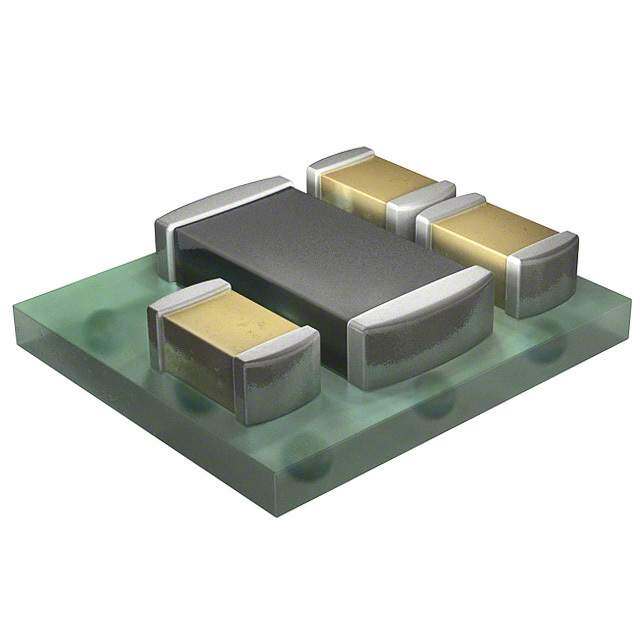
 Datasheet下载
Datasheet下载


